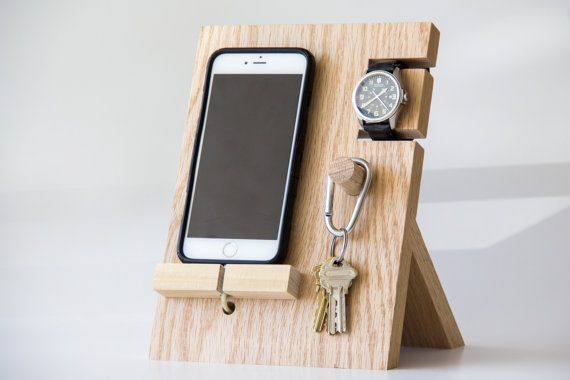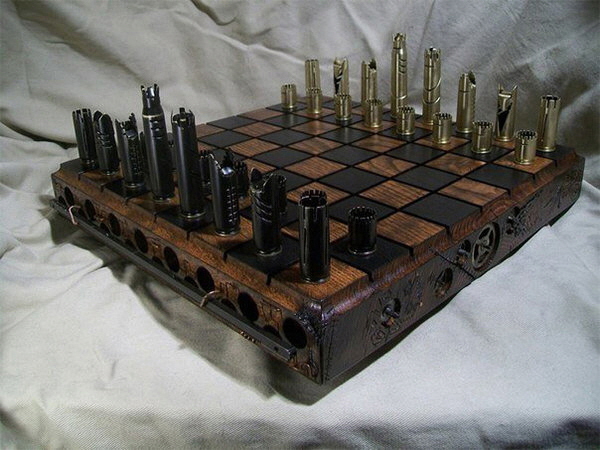Convertible Dining/Gaming Table
As his family continues to grow, it's time for Marc Spagnuolo to build a new dining table. Since both the Wood Whisperer and his wife are self-professed gaming geeks, he opted to build a convertible dining/gaming table. (It's not as elaborate as Geek Chic's gorgeous gaming tables, but Spagnuolo's version is meant to be more of a doable DIY project than a $13,000 masterpiece.) I loved watching this carefully-planned build come together:
Improvised Corner Joinery Method
Because I make so many screw-ups myself, one of my favorite things to watch is how people recover from making screw-ups in their own shop. Here Matthias Wandel has miscalculated and cut some pieces of plywood for a storage box too short; not wanting to waste the wood, he improvises a signature Wandel fix.
One Hell of a Bell
Holy cow. Frank Howarth makes what has to be one of the most complicated-to-fabricate Christmas ornaments I've ever seen, using a combination of segmented turning, CNC milling, and a variety of improvised solutions. As always, it is fascinating to watch architect Howarth when he tackles a project where he designs as he goes along, rather than sticking with a rigid plan.
Mobile Shop Cart

As April Wilkerson continues building out her shop, she needs to create more shop furniture to hold the influx of new tools. Here she whips up a mobile shop cart to hold her new thickness planer and spindle sander.
Things to Use an Ice Pick For

This week on Jimmy DiResta's channel we've got a surprise comedy video, courtesy of shopmate David Waelder. Together the two have been collaborating on these handsome, useful icepicks, and in the video they show some potential applications.
Handheld Beer Launching Device

Izzy Swan's got a show-and-tell video this week, demonstrating his crazy http://shop.jimmydiresta.com/ice-pick/ . Yep, it's just what it sounds like: A handheld device made to launch a six-pack--not all at once, of course--into the neighbor's yard.
Teaser For a Combination Samurai/Roubo Workbench

This week's video from The Samurai Carpenter is a bit of a tease. With his new shop starting to take shape, he gives us a clamped-up glimpse of the "Sam-bo" workbench he's developing--a hybrid between a "Samurai" bench and a Roubo workbench. We can't wait to see the finished product!
On a Mission to Hang Coats

Jay Bates gets to kick back and narrate while he puts his clone to work banging out a Mission-style coat rack. Along the way, he uses the convenient circle template that all of us have in our kitchens. And on the project page, he reveals how Sketchup is not only helping him work out his designs, but save on paper: "I rarely print anything anymore so with the completed design and material layout [done in Sketchup] sent to my phone I could start marking my material and preparing for the first few cuts."
Ana White Builds a House, Gets a Show

Ana White made a big announcement this week: She and husband Jacob have been quietly working on an amazing-looking remote lakeside cabin in Alaska--and the building process has been picked up by the DIY Network! The resultant show, Building Off the Grid - Alaska Range will premiere on Tuesday, December 15th at 10pm.
The Santa Claus that No One on Alderaan Wants to See

Christmas is coming up. So is the new Star Wars movie. Therefore this week Bob Clagett did the only reasonable thing, which is to build a Santa-themed Death Star to go onto the roof of his house.
One From the Archives
Custom Angle Shooting Plane
Hand tool maven Shannon Rogers, a/k/a The Renaissance Woodworker, shows you how to make a custom angle shooting board--by cleverly saving the offcut from the piece you're working. Sure, woodworking purists will insist you oughtn't use a hand plane on plywood; but the thing I love about Rogers is that he doesn't stand on ceremony and just gets the job done. Tools are tools, use 'em!






































































































